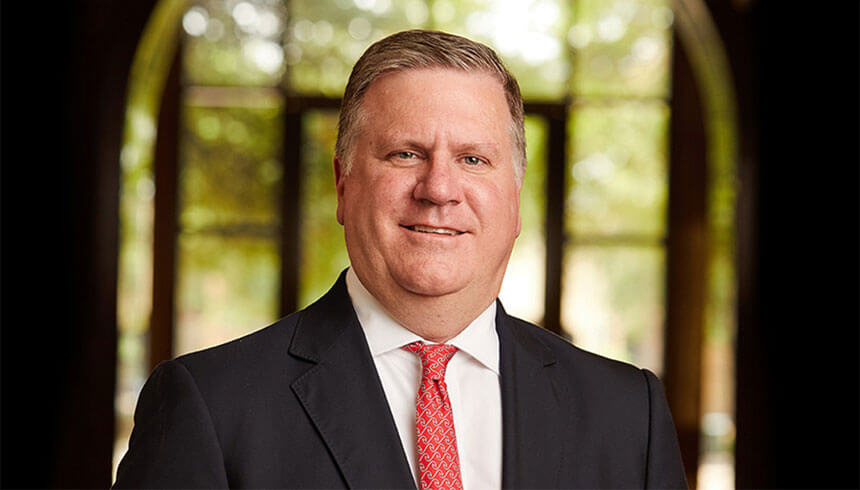Dialogues
Michael Burr: Putting Human Interaction Back into Banking
By Vickie An

The East West Bank executive discusses the importance of person-to-person communication for lenders in the digital age.
The rapid pace of technology in recent years has disrupted industries across the board, and banking is no different. In this increasingly digital age, more and more customers seek personalized solutions that offer speed, mobility and flexibility—products that essentially eliminate the need to visit a local branch. But when it comes to commercial and corporate lending, maintaining regular human-to-human interaction between a banker and a client is still crucial to a successful relationship, says Michael Burr, senior managing director and head of the Texas market at East West Bank.
“What we do is way too complicated and way too entwined to be able to lean on technology as the be-all end-all,” he says. “In fact, I've seen more and more clients frustrated. It's a great communication tool relative to feedback, relative to information flow. But relative to really fully servicing the needs of our clients, technology is a tool. It is a component to the entire apparatus, where human interaction cannot be substituted.”
Burr would know. He joined East West Bank last year with more than 30 years of investment and commercial experience under his belt. In his current role, he develops corporate banking teams in the Dallas, Houston and Austin markets. Burr chatted with us about the need to preserve human interaction in banking, what makes a good team leader, and the path forward for commercial banking.
What are some of the most important things banks need to understand about the wants and needs of business clients when it comes to their banking experience today, versus in the past?
There are some things that haven't changed and will continue to be fundamental to how bankers address clients’ needs, and the first and foremost, always, is listening. In this day and age of all the technology that we have, the focus with my team is, don’t over-rely upon technology. You've got to continue to make sure that the communication between you and your client is done in a person-to-person way to ensure that there is no confusion relative to what our clients’ needs are. I think that the biggest change that’s happened in the last decade is we've gotten away from that and gotten into almost a hundred-percent electronic-type communication, which I think leads to a lot of issues.
How do you encourage your team members to go out there and reach those clients in a person-to-person way?
When I’m brought into a situation, I ask the bankers a simple question: “Did you talk to your client or the representative face-to-face or on the phone?” If not face-to-face, then I basically send them back and say, until we have clear, concise, direct communication, we’re not going to move forward on anything. So the biggest thing, from a management perspective, is that I've got to lead by example. I try not to let e-mails and technology responses dominate how people interact with me. And so, you know, if it's something of a serious nature where the bank is going to be utilizing its capital, we need to have direct communication with all parties involved.
How has past experience helped you in this role?
It’s invaluable because, frankly, what I'm doing in trying to change behavior, change approach, is all a result of my 30 years of business experience. Banking, in my opinion, is a learned experience, and it’s not something that can be taught out of a book. In understanding how you manage and balance the goals of the bank from a revenue standpoint, relative to the risk, can only be ascertained and evaluated and developed through years and years of experience.
What do you look for in a good team leader?
Great communicators and people who look at themselves as a servant leader, meaning they’re more worried about the people than they are about themselves. To me that is critical, because if you have that kind of centered approach you’re going to be able to handle the various needs and issues and challenges that exist on a day-to-day basis in both developing and maintaining business. Equally, I think that the team concept is critical because we work so much with various partners, both on the product side as well as the underwriting and credit side of the equation. We have various daily situations where we’ve got to be looking at it from a team perspective, not from an individual perspective.
The key thing right now from a leadership standpoint is that we have so much opportunity in Texas and Southwest. It’s my role to continue to make sure that we’ve got the right people interfacing against that opportunity. I think we have a huge amount of opportunity that we’re just now tapping into, so it’s a very exciting time.
Subscribe to the Reach Further Newsletter
Get inspiring stories in your inbox every month.

